Klein
Constantia, and the historic Vin de Constance
South
Africa revisited part 14
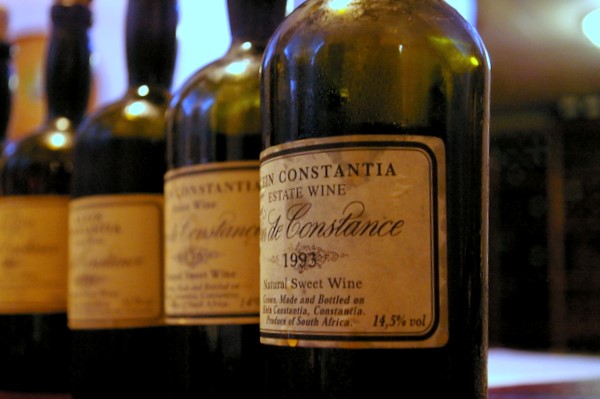
I’d
visited Klein Constantia before, as a humble consumer while on a
family holiday. So it was nice to return and visit professionally,
with winemaker Adam Mason. While Klein Constantia make a full range of
wines, the focus of this visit was the famous Vin de Constance. This
is a piece of living history: in the 18th and 19th centuries,
Constantia was one of the world’s great sweet wines, but it
disappeared with the phylloxera crisis in the late 19th century.
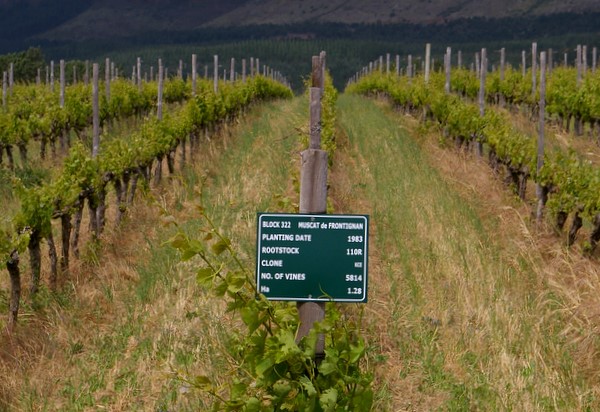
But
since 1986 Klein Constantia have been making a sweet Constantia which
they have labelled Vin de Constance based on the original wines that
were made here. Back then, the original Constantia property was around
900 hectares. Part of the original vineyard is now suburbs, and the
remainder is split into four properties: Klein Constantia,
Buitenverwachting, Groot Constantia and Constantia Uitsig.
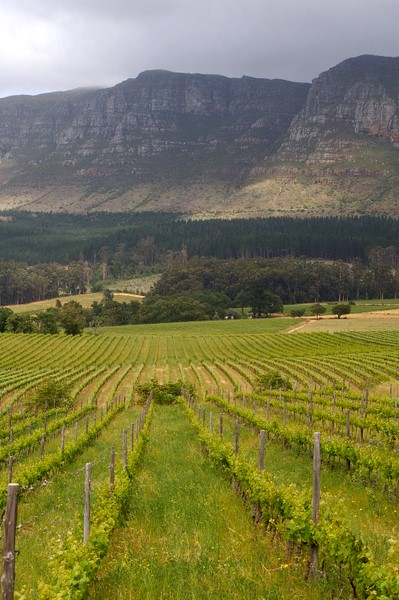
When
the Jooste family bought the property in 1980, they were approached by
a Stellenbosch Univeristy viticulturist, the late Professor Chris
Orffer, who encouraged them to try to recreate the historical sweet
wine. Orffer assisted the Klein Constantia team in their quest to
produce something resembling the original as closely as possible, and
through the skilled winemaking of the late Ross Gower, this was
achieved.
Botrytis
wasn’t a feature of the original Constantia wines, because it wasn’t
present in the Cape at that time. For the sake of historical accuracy,
therefore, Vin de Constance is a late-harvest style made from Muscat
de Frontignan (aka Muscat Blanc à Petits Grains) grapes, without
botrytis. First plantings of these Muscat vines were in 1982, and the
first release of the new era Constantia was the 1986 vintage, released
in 1990.

Adam Mason
The
vineyards are arranged on the slopes of the Constantiaberg mountain,
with a progression of soil types: sandstone at the top with sandy,
rocky scree, then richer clay soils over decomposed granite, then at
the bottom soils with more sand. There are 8 hectares of Muscat
planted here.
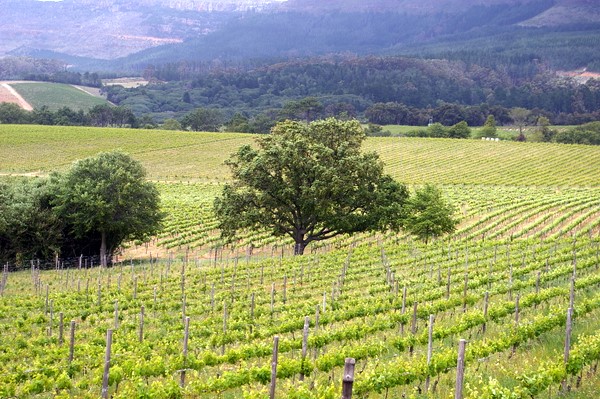
10%
of the Muscat is picked early, to make a base wine at 12.5–13 %
alcohol with good acidity. Then they go and pick raisined grapes. The
remaining grapes are left to accumulate sugar, and leaf removal
exposes the fruit to the sun, which helps raisin some of the remaining
grapes. Then, the big pick takes place in three passages through the
vineyard. Altogether, around 10% of the crop will be raisins. If the
raisins have lots of sugar left in the skins, then the base wine is
used to flush the flavour out.
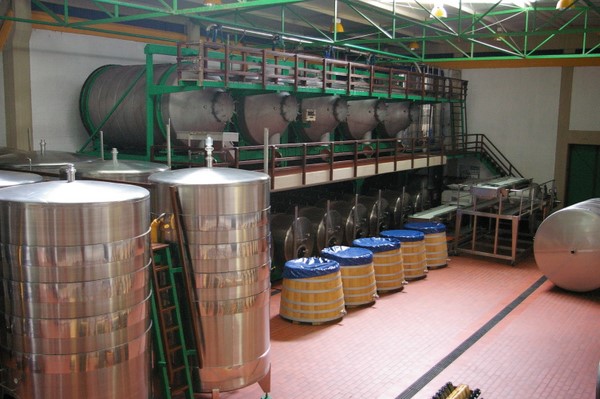
The
skins are pressed quite hard, because tannins are an important part of
the style. It’s not possible to settle this dirty juice, so it goes
to barrels for fermentation. These barrels are 500 litres and the wine
stays in these on gross lees for up to four years. For example, the
2006 is still in barrel and the oxidative maturation makes it quite
stable.
Adam
wants fermentation to end at about 14% alcohol to leave enough sugar
to protect the wine. By this stage, the wine is naturally stable. ‘A
feature that runs through the range is a textural dry character on the
finish,’ says Adam.
Since
Klein Constantia released their Vin de Constance, neighbouring estates
have joined the game: Groot Constantia have their Grand Constance, and
Buitenverwachting have their 1769.
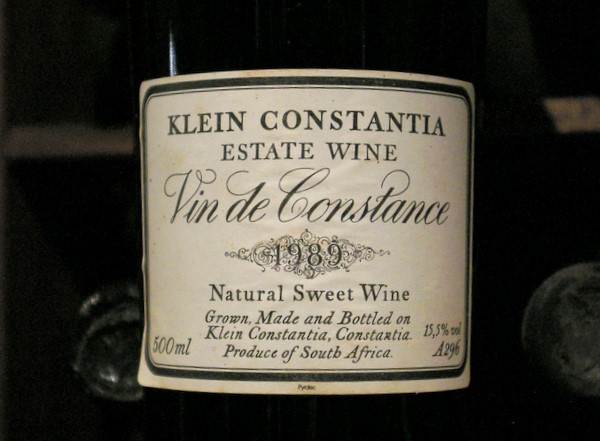
THE
WINES
We
had a wonderful chance to try an extended vertical of these wines,
back to 1993.
Vin
de Constance 1993
Lovely fresh herby edge to the sweet raisin and butterscotch nose.
There’s lots of spicy complexity and a hint of volatility. The
palate is bright, fresh and citrussy with a deliciously sweet, rounded
character countered by spiciness and bright acidity. So lively and
expressive with lovely sweet complexity. 93/100
Vin
de Constance 1996
This was a wet vintage so there might be a touch of botrytis here.
Intense, brooding nose with sweet spicy peach and pear notes and a
fresh apricot character. The palate is bright, fresh and complex with
rich textured fruit. Very smooth and elegant, and so alive. An amazing
wine. 96/100
Vin
de Constance 1999
Fresh, open nose displaying fruity, marmalade and barley sugar
notes. The palate is fresh and intense with amazing richness yet
bright subtly raisined apricot and spice flavours. Pure and
concentrated, with a beautiful texture and great length. Thrilling.
96/100
Vin
de Constance 2001
Lively and intense with lemon, herb and apricot notes on the nose.
Intense and viscous, yet lively and fresh with bold grape, pear and
apricot notes. Good complexity and citrus freshness. 94/100
Vin
de Constance 2004
Very rich, smooth and ripe on the nose with aromatic sweet grape,
pear, peach and apricot notes. The plate is fresh, light and open with
some spice and citrus complexity. Very sweet but not heavy: a fresh
style with good acidity and real potential. 93/100
Vin
de Constance 2005
Just about to be released. Complex nose with spicy, lifted, citrus
peel character. Very sweet but with a pithy edge. The palate has
viscous, bold, pithy fruit with some spice. It’s still quite primary
with amazing potential. At the moment the pure apricot, pear and
citrus fruit are to the fore. 94/100
SOUTH
AFRICA REVISITED
 Part
1, Tulbagh Mountain Vineyards Part
1, Tulbagh Mountain Vineyards
 Part
2, Cape Point Vineyards Part
2, Cape Point Vineyards
 Part
3, AA Badenhorst
Family Wines Part
3, AA Badenhorst
Family Wines
 Part
4, Eben Sadie: Sadie
Family Wines and Sequillo Cellars Part
4, Eben Sadie: Sadie
Family Wines and Sequillo Cellars
 Part
5, Paul Kretzel of
Lammershoek Part
5, Paul Kretzel of
Lammershoek
 Part
6, Mullineux Family
Wines Part
6, Mullineux Family
Wines
 Part
7, Vondeling Part
7, Vondeling
 Part
8, Scali Part
8, Scali
 Part
9, Sterhuis Part
9, Sterhuis
 Part
10, Raats Part
10, Raats
 Part
11, Migliarina Part
11, Migliarina
 Part
12, Charles Back and Fairview Part
12, Charles Back and Fairview
 Part
13, Hermit on the Hill Part
13, Hermit on the Hill
 Part
14, Klein Constantia Part
14, Klein Constantia
 Part
15, Iona, Elgin Part
15, Iona, Elgin
 Part 16, Paul
Cluver, Elgin Part 16, Paul
Cluver, Elgin
 Part 17, Eagles'
Nest, Constantia Part 17, Eagles'
Nest, Constantia
 Part 18, Anthonij
Rupert Part 18, Anthonij
Rupert
 Part 19, Oak
Valley, Elgin Part 19, Oak
Valley, Elgin
 Part 20, Shannon,
Elgin Part 20, Shannon,
Elgin
Wines
tasted 11/09
Find these wines with wine-searcher.com
Back
to top
|

